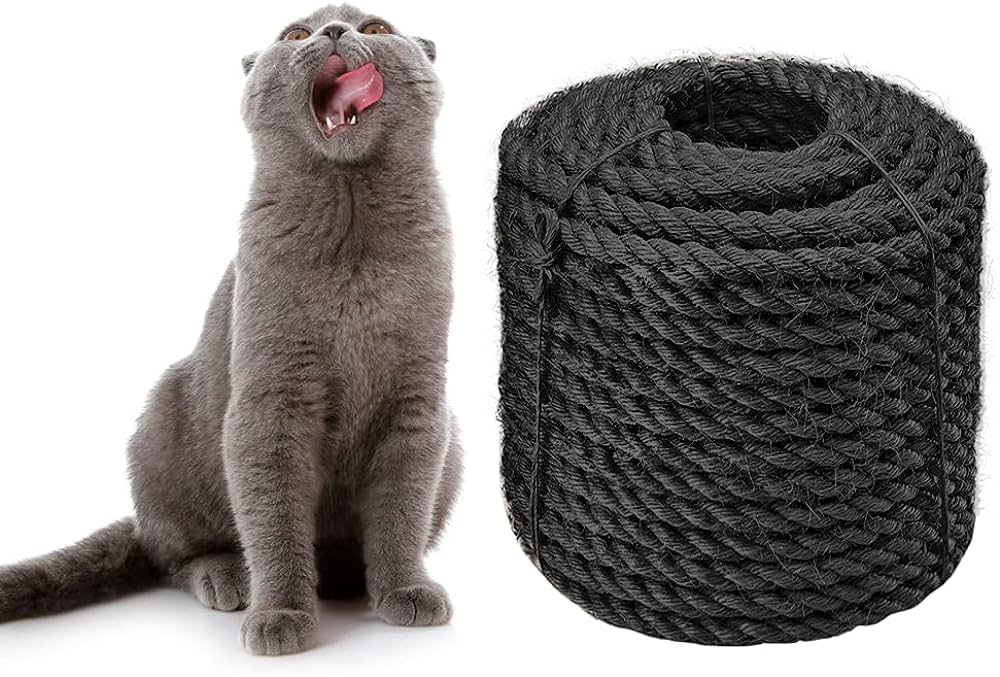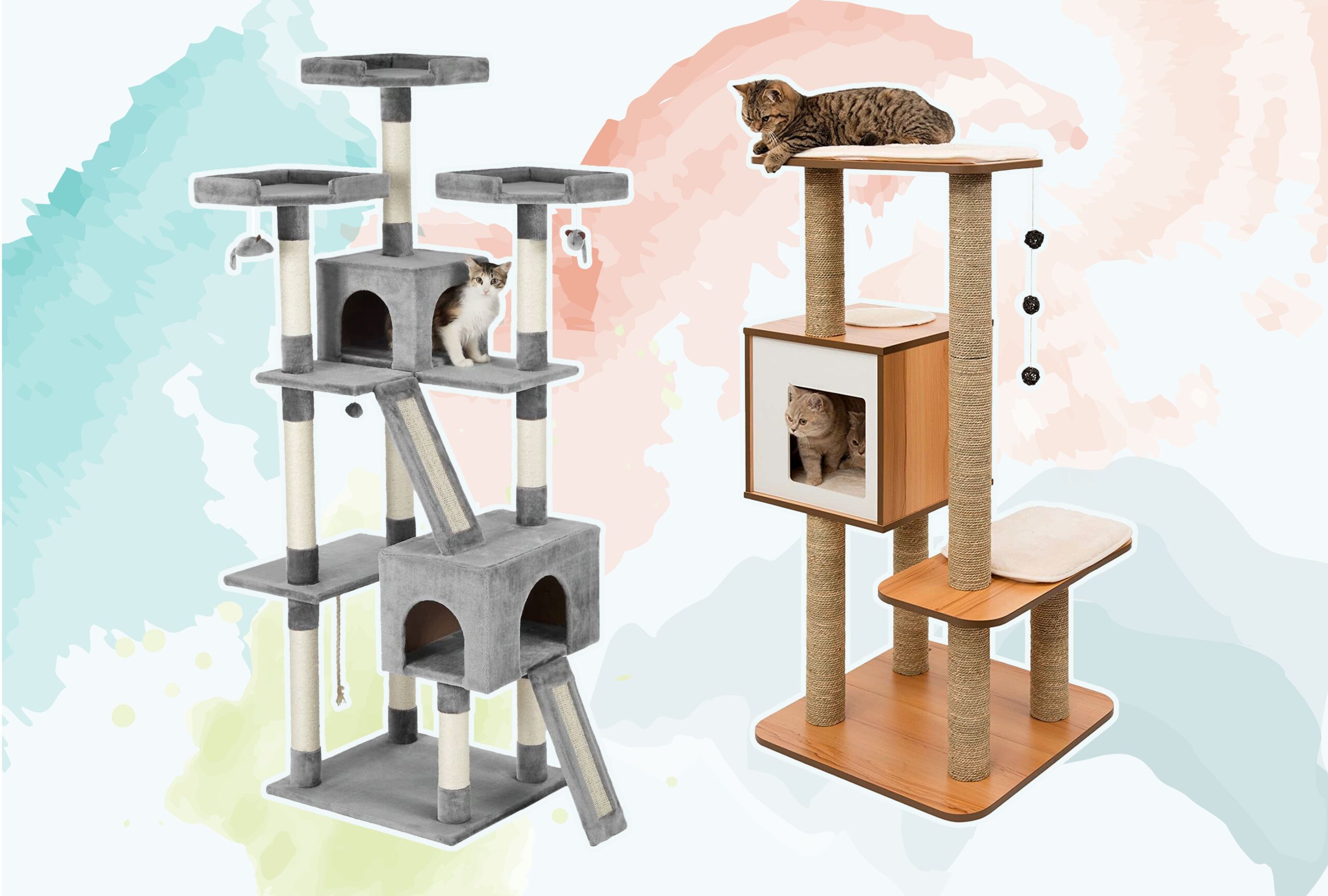The cost of building a cat tree can range from $20 to $200. Material quality and size largely dictate the price.
Crafting a cat tree for your feline friend combines both utility and entertainment in one project. Cat trees offer your pet the perfect perch to survey their kingdom, fulfilling their instinctive urge to climb and scratch. Owners can customize these structures to suit their cat’s needs while adding a touch of their aesthetic preference.
By building a cat tree, you also ensure a safe and sturdy environment for your cat to play and lounge. This DIY venture can be as simple or complex as you wish, from a basic tower to a sprawling, multi-level play complex. Whether you’re a seasoned DIYer or a novice craftsperson, creating a cat tree can be both rewarding and cost-efficient, offering an alternative to store-bought options and ensuring a perfect fit for both your cat’s needs and your home’s decor.
The Rise Of Cat Trees
Cat trees have become a staple in the homes of feline lovers. As more people embrace indoor pets, these playful structures offer a slice of the outdoors for urban cats. They fuse functionality with entertainment, making them indispensable in modern pet care.
Popularity In Urban Spaces
City dwellers often face space limitations. Cat trees provide a compact solution for their furry friends to exercise, play, and relax. High-rise living doesn’t stop pet owners from investing in their cats’ wellbeing.
- Maximize limited space
- Blend with modern decor
- Functional for multiple pets
Benefits For Indoor Cats
Indoor cats thrive with stimulation and vertical space. Cat trees provide numerous advantages. They cater to a cat’s instinct to climb and survey their domain.
| Benefit | Description |
|---|---|
| Exercise | Promotes physical activity and health |
| Scratching Posts | Protect furniture by offering an alternative |
| Stress Relief | Relaxation spots reduce anxiety |
| Territory | Creates a sense of ownership and privacy |
:max_bytes(150000):strip_icc()/best-cat-trees-4159408-da66af890782426fb82e6036af07b36b.jpg)
Credit: www.thesprucepets.com
Pre-build Considerations
Planning to build a cat tree is fun and exciting. It requires careful thought about your cat’s personality, habits, and the space in your home. Think about these factors before starting your project to ensure a perfect and safe climbing haven for your pet.
Assessing Your Cat’s Needs
Understanding your cat’s preferences is crucial. Consider their age, size, and activity level. Here’s what to keep in mind:
- Older cats may need gentle levels and ramps
- Young, energetic cats enjoy high perches and multiple platforms
- Scratching posts should be tall and sturdy for claw care
Choosing The Right Location
Where you place the cat tree can affect usage. Pick a spot with a good view. The location should be:
- Quiet and safe from heavy traffic
- Away from sensitive items that may break
- Near a window if your cat loves to watch outside
Safety First: Materials And Design
Safety is non-negotiable. Use non-toxic materials. Ensure stability and durability:
- Choose sturdy wood for the base and posts
- Select strong screws over nails or glue for assembling
- Cover edges for extra safety
Also, think about balance. Avoid tall, narrow designs that may tip.
Material Costs Breakdown
Embarking on a DIY cat tree project? Understanding costs is crucial before you dive in. The material costs can vary based on size, quality, and personal preferences. From sturdy wood bases to cozy textiles, the price tags differ. Let’s break it down to help estimate your budget accurately.
Wood And Platforms
Wood forms the foundation of a cat tree. It provides stability for rambunctious felines. Here’s what you might spend:
| Type | Size | Cost |
|---|---|---|
| Plywood | 4’x8′ | $20-$50 |
| Pine Boards | Per foot | $1-$3 |
| Particle Board | 4’x8′ | $10-$20 |
Sizes and prices will vary, but these figures offer a starting point.
Textiles: Carpet And Rope
Comfort is key for cats. Carpet and rope add softness and allow scratching. Expect to pay:
- Carpet Remnants: $5-$10 per yard
- Sisal Rope: $0.10-$0.30 per foot
Always opt for durable textiles to endure cat antics and last longer.
Fasteners And Adhesives
Keep your cat tree safe and sturdy. Screws, nails, and non-toxic glues are essential. Typical costs might be:
| Item | Quantity | Price |
|---|---|---|
| Wood screws | Pack of 100 | $5-$10 |
| Nails | Pack of 100 | $3-$5 |
| Adhesive | Per tube | $3-$10 |
Choose the right fasteners for a durable but safe structure.
Step-by-step Diy Guide
Are you ready to create a purr-fect paradise for your feline friend? Building your cat tree is a fun project that saves money and can be customized for your cat. Let’s dive into this step-by-step DIY guide to create an amazing cat tree that brings joy to your kitty without breaking the bank.
Designing Your Cat Tree
First, envision the ideal play space for your cat. Think about size, shape, and your cat’s habits. Create a simple sketch to guide your build. Aim for sturdy platforms and cozy hideaways.
- Size: Measure the intended area.
- Height: Pick a ceiling-friendly height.
- Materials: Choose durable, cat-friendly options.
Tools You’ll Need
Gather your tools before starting to ensure a smooth build process.
- Measuring tape: For precise dimensions.
- Saw: To cut wood or PVC.
- Drill: To assemble parts together.
- Staple gun: For attaching fabric and rope.
Assembling The Base
The base is vital for stability. Pick a thick piece of wood or plywood. Cut it to your desired size. Ensure it’s larger than the overall structure for support.
- Cut base using saw.
- Drill holes for attaching posts.
- Screw posts to the base firmly.
Adding Levels And Features
Now, add platforms and play areas. Consider multiple levels for climbing. Attach each level with brackets or screws.
- Platforms: Secure firmly to posts.
- Sisal rope: Wrap around posts for scratching.
- Hideouts: Include cozy spaces for naps.
Finishing Touches
- Carpet: Staple on platforms for comfort.
- Toys: Dangle for extra engagement.
- Inspection: Check for any sharp edges.
After these final touches, introduce your cat to their new playground!
Budget-friendly Tips
Crafting a cat tree without breaking the bank is simpler than you might think. Embrace creativity and sustainability with these budget-friendly tips. They will guide you through making a happy place for your feline friend without emptying your wallet.
Recycling Materials
Utilize what’s already available to you. Scraps such as old rugs, cardboard boxes, or wood can be transformed into a cozy cat retreat.
- Cardboard tubes for posts
- Scrap wood for bases and platforms
- Old carpets or clothing for scratching sections
Where To Find Deals
Scour local listings like Craigslist or Facebook Marketplace for materials or pre-loved cat trees you can modify.
| Source | Items | Estimated Savings |
|---|---|---|
| Garage Sales | Tools, Fabrics | 50%-70% |
| Thrift Stores | Furniture, Wooden Items | 30%-60% |
Maintaining Your Cat Tree
Keep the cat tree in tip-top shape to avoid frequent rebuilds. Follow a simple cleaning routine.
- Vacuum fur and dust regularly
- Tighten loose screws or joints
- Replace worn-out scratching posts
Incorporate detachable sections for easy repairs or upgrades over time
:max_bytes(150000):strip_icc()/diy-scratching-post-21-2000-162e32f8dc354f94b80c4fe7ab63f475.jpg)
Credit: www.dailypaws.com
Alternative Solutions
When building a cat tree, consider alternative solutions. They can reduce costs. They are creative. They are fun to explore. Let’s dive into some options.
Modifying Existing Furniture
Transform household items into feline-friendly spots. This saves money. Start with sturdy bookshelves. Cover them with soft fabric. Add scratch posts using rope. Below are some ideas:
- Cushions for sleeping nooks.
- Install shelves at different heights.
- Use sisal rope for scratching areas.
Community Resources For Building
Tap into local community resources for help. Share cat tree projects. People can offer tips. They might donate materials. Tools may be available for borrowing. Check out:
- Online forums and social media groups.
- Neighborhood hardware stores for spare parts.
- Workshops or maker spaces.
Comparing Diy To Store-bought
Building a cat tree yourself can be less expensive than buying one. Here’s a comparison:
| DIY Cat Tree | Store-Bought Cat Tree |
|---|---|
| Materials: Any your home offers | Materials: Predetermined, non-adjustable |
| Cost: Mostly your time and creativity | Cost: Often higher, includes labor and shipping |
| Customization: Tailored to you and your cat’s needs | Customization: Limited to what’s available |
A DIY approach offers flexibility and personal touch. Purchasing has convenience. Balance your time, skills, and budget when choosing.
:max_bytes(150000):strip_icc()/peo-cat-tree-tout-149c7d493e404360872de14754ce2f40.jpg)
Credit: people.com
Frequently Asked Questions For How Much Does It Cost To Build A Cat Tree
What Is The Average Cost Of A Homemade Cat Tree?
The average cost to build a homemade cat tree ranges between $50 and $100. This varies based on materials, tools, and whether you’re repurposing items or buying new.
Can I Build A Cat Tree On A Tight Budget?
Absolutely! Building a cat tree on a budget is feasible. Using repurposed materials such as scrap wood, old furniture, or recycled items can keep costs under $30.
What Are Essential Materials For Diy Cat Trees?
Essential materials include sturdy wood or PVC for the structure, sisal rope for scratching posts, comfortable fabric or carpet for lounging areas, and screws or nails for assembly. Tools like a saw and drill may be needed.
How Long Does It Take To Build A Cat Tree?
For most DIY enthusiasts, building a cat tree can take a weekend. Preparation takes time, but actual construction typically requires between 4 to 8 hours, depending on complexity.
Conclusion
Crafting a cat tree for your feline friend can be both fun and rewarding. The costs vary, depending on materials and complexity. Whether choosing DIY methods or purchasing pre-made, you’re investing in your cat’s happiness and well-being. Remember to balance your budget with the joy a quality cat play area can bring.


